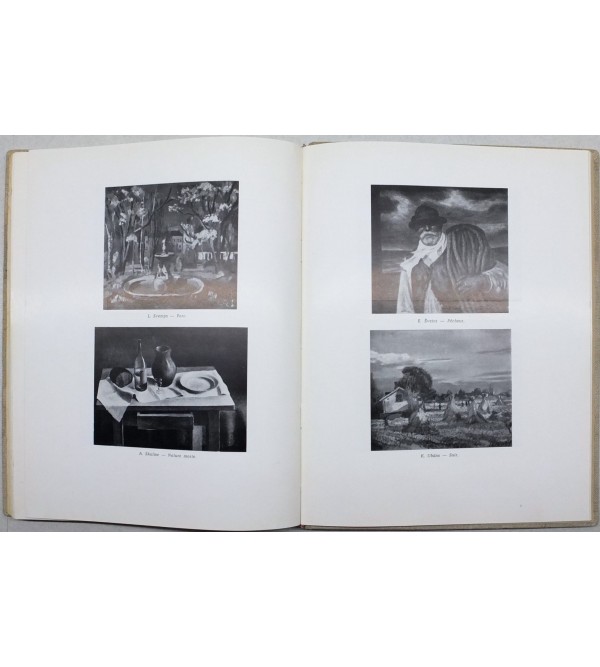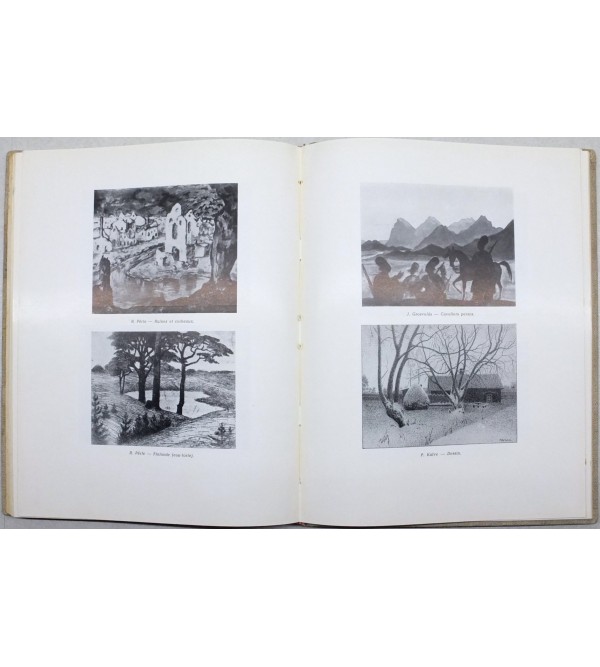L'art letton : essai de synthèse historique (Latvian Art : An Essay of Historical Synthesis)
- 400€
- Product Code:92
- Availability:In Stock
Near Fine condition; hardcover (publisher’s?) binding covered with cloth shows very light trace of moisture along fore-edge of front board; internally slight trace of moisture (about 7 cm lenght) along outer edge margin of 40 firs..
Tags: rare books, first edition books, Latvian avant-garde, constructivism, cubism, futurism, Boris Vipers
Near Fine condition; hardcover (publisher’s?) binding covered with cloth shows very light trace of moisture along fore-edge of front board; internally slight trace of moisture (about 7 cm lenght) along outer edge margin of 40 first sheets. Book is printed on coated stuff.
During the regime of Karlis Ulmanis (1934-1940) Latvian visual art was characterized by glorification of the national ideas, praise of the authoritarianism, vindication of the ethnographic elements and ancient history. The achievable goal was a Latvian Latvia, which was to be attained with a truly Latvian art. Thus Vipers, the regime’s thurifer and historian, felt obligated to state in 1940 in his essay on Latvian Art: “Latvian artists today must be careful to retain their individuality and, while remaining true to their ancestral traditions, they must be courageous creators.” Among young talents whose artworks indicate a return to the solid foundations of style, to the spirit of ancestors' land, to the the national traditions and, at the same time, greatly reflect the rhythm of modern life are named A. Egle, Ed. Kalnins, O. Neilis, A. Spertals, J. Strazdinš etc.
The main task of Vipers’ current and previous publications of the same name (Latvju māksla, dated 1927) was to determine the general national specificity of Latvian art, to identify the factors that hindered the development of art (dependence on the great powers) as well as those factors that aided the art life in the period of independence. But in contrast to earlier work, in current one the art achievements has been viewed from the position of authoritarianism. Also current research is more broader and for the first time in the history of Latvian art criticism accommodates historical synthesis of all periods in Latvian art developent: prehistoric culture, ethnic crafts, historic styles and contemporary art. In the book was made a number of new, independent judgements concerning the features, traditions and destinies of the art of Baltic States. In addition, the edition provides rich illustrative material on considered topics - crafts, sculpture, architecture, painting, graphics, which includes numerous images in the text and 101 illustarions printed on 26 separate leaves at the end.
The prominent Russian-born art historian Boriss Vipers (Boris Vipper, 1888-1967) made a lasting contribution to the study of Latvian art and art theory while living and working in Riga (1924-1941) as a lecturer at the University of Latvia and the Latvian Academy of Art.
| Specification | |
| Title | L'art letton : essai de synthèse historique (Latvian Art : An Essay of Historical Synthesis) |
| Author | Boriss Vipers (Boris Vipper) |
| Publisher | Tāle, Rīga |
| Published year | 1940 |
| Country | Latvia |
| Edition | 1st edition |
| Binding | Hard cover |
| Octavo | 21 x 26 cm |
| Weight | 0.800 kg |
| No. of pages | Wrappers, 112 pp., 26 leaves of illustrations |
| Language | French language |




